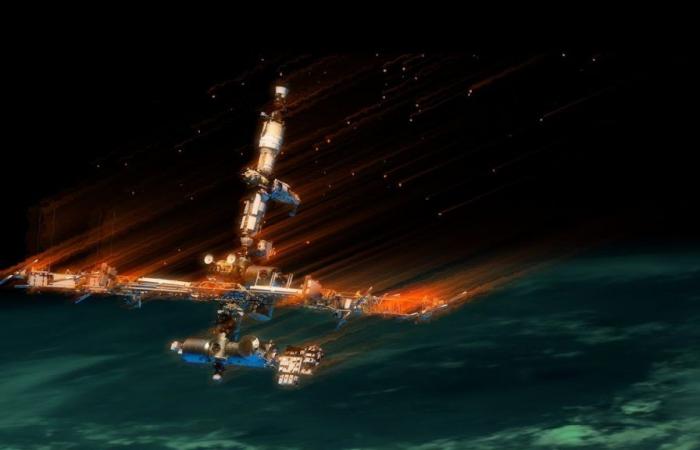
In a surprise announcement because it was not public that the selection process was underway, NASA has announced that it has awarded SpaceX the contract for the design and construction of US Deorbit Vehicle, United States Exorbitant Vehicle, USDV. It is the ship that will have to guide the International Space Station (ISS) in a controlled re-entry into the atmosphere at the end of its career. SpaceX has won the award for 843 million dollarslaunch apart.
It is true that the agency had made a request for ideas from the industry for this maneuver in the summer of 2022. But as far as was known, it had not gone any further.
It is not clear when it will be launched or when the ISS’s career will end, which from what we know now will be in service at least until 2030. But you have to prepare because it will take some time to develop, build and launch the USDV, which will have to dock with the Station a few months before the end.
Phased (controlled) destruction
The process will begin by letting the ISS lose altitude naturally by friction with the atmosphere until it reaches about 250 kilometers. Below that the reaction wheels will no longer be able to maintain control of your attitude, so you will have to use the Russian segment thrusters.
A few days before reentry, the USDV will adjust the minimum altitude of the Station’s orbit to about 165 kilometers. Once again, atmospheric friction will lower the orbit to about 145 kilometers. A final firing of the USDV’s engines will bring it down to just 50 kilometers.
It is estimated that the solar panels and radiators begin to disintegrate at about 110-120 km altitude, which module breakage occurs at about 84-100 km and at 70-75 km it has already completely dismantled.
The goal of the UDSV is to put the ISS on a trajectory that makes it destroy and burn as much as possible but at the same time make the area on which the debris can fall be as small as possible. Of course the re-entry will direct it towards Point Nemo, the point in the Pacific Ocean that is furthest from any inhabited place.
Originally the USDV task was to be carried out by Russian Progress capsules. And in fact in the video above you can see one docked to the rear port of the ISS. But as things stand with Russia’s invasion of Ukraine, no one can trust that it will be like that.
The video also shows the modules Nauka, Prichal and ShK Lock still docked to the Station during re-entry. Although Russia has plans to convert them into the base of the future orbital station ROS. Only, again as things stand, it’s highly unlikely you’ll have the resources to do so.
Nauka, Prichal with Soyuz MS-25 docked, and the ShK airlock – Roscosmos
Artist’s impression of the ROS in orbit – Roscosmos
The idea is that by the time the ISS is deorbited there will already be some in service. commercial space station in which ISS partner space agencies can contract time and services. While the Gateway lunar station It should already be operational to support the Artemis program missions to the Moon. But all this also remains to be seen. Although it has many more signs of becoming reality than the Russian plans.
And higher up?
NASA considered at the time increasing the altitude of the Station’s orbit. Because although at its current altitude of just under 500 km it would re-enter the atmosphere in a couple of years, the higher up it would be, the longer it would last. By “only” raising it to about 650 kilometers it would last in orbit about 100 years.
But that has several problems. One, there is not no ship not even remotely capable of giving it the boost needed for such an increase in altitude. Maybe in the future a Starship variant could do it. Although in that case it would be far from trivial to dock such a large ship to the Station. And do it in such a way that the union could withstand the impulse. Not to mention that the same the structure of the Station would not tolerate it.
There is also the problem that the Station is not autonomous, so it would be necessary to keep it manned permanently, a cost that it is not clear that the agencies involved would want to assume. In addition to the fact that their modules have been in space for many years, they are increasingly experiencing problems.
Finally, at that altitude the probability of a catastrophic impact with space debris grows exponentially: from one every approximately 50 years at its current altitude to one every four years at 800 kilometers.
So it’s going to be no.
But until the day arrives, we must make the most of the ISS, which has permanently busy since November 2, 2000.
(Some data via Michal Vaclavik.)





